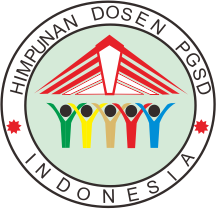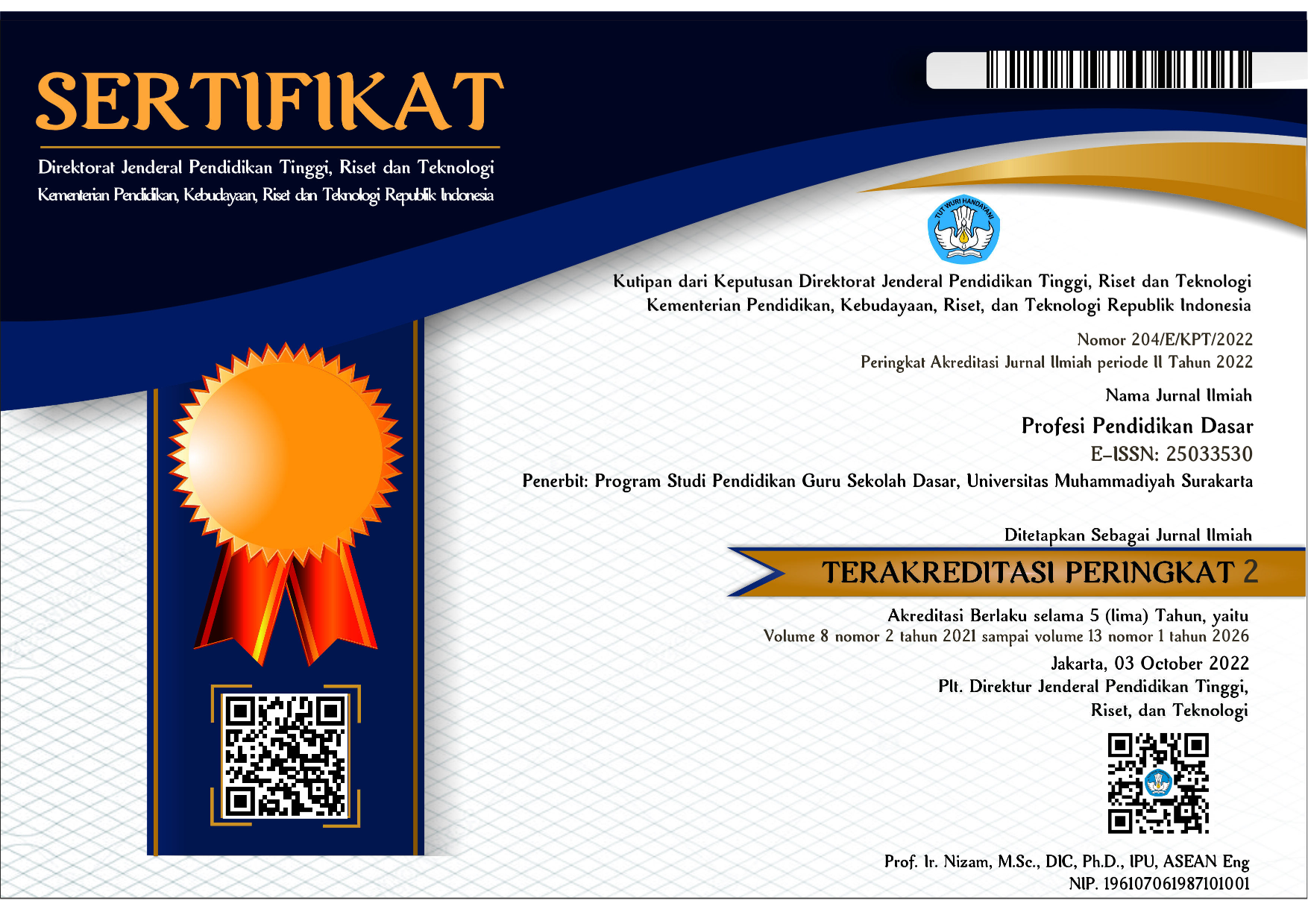KEEFEKTIVAN METODE LEARNING STARTS WITH A QUESTION PADA PEMBELAJARAN GEOMETRI
Lingga Nico Pradana(1*)(1)
(*) Corresponding Author
Abstract
methods on geometry learning. The effectiveness of these methods would be compared with
presentation method. The method of this research was quasi experimental method with 2x1
factorial design. The population in this study was the third semester students at PGSD IKIP
PGRI MADIUN while the sample was 3G as an experimental class and 3C as the control class.
The sampling technique used was cluster random sampling. Methods of data collection in this
study was test method and divided into two: pre-test and post-test. Data analysis techniques
used in this study is a t-test with two independent samples. The results of this study were learning
starts with a question method was more effective than presentation method.
Keywords
Full Text:
PDFReferences
Anne, H., Shelli, B., & Edward, W. 2007. Active Learning and Technology: Designing Change for Faculty, Students, and Institutions. EDUCAUSE Review. Vol. 42. No. 5. p.42-44.
Arnon, S., Reichel, N. 2009. Closed and Open-Ended Question Tools in a Telephone Survey About ``The Good Teacher'' An Example of a Mixed Method Study. Journal of Mixed Methods Research. Vol. 3. No. 2.p. 172-196.
Dori, Y., Herscovitz, O. 1999. Question-Posing Capability as an Alternative Evaluation Method: Analysis od an Environmental Case Study. Journal of Research In Science Teaching. Vol. 36. No. 4. p. 411-430.
Flynn, A. 2012. Development of an Online, Postclass Question Method and Its Integration with Teaching Strategies. Journal of Chemical Education. Vol. 89. No.4. p. 456–464.
Fukumoto, J. 2007. Question Answering System for Non-factoid Type Questions and Automatic Evaluation based on BE Method. In Proc. NTCIR-6Workshop Meeting. p. 441-447.
Freeman, R., Eddy, S., McDonough, M., Smith, M., Okoroafor, N., Jordt, H., & Wenderoth, M. 2014. Active Learning Increases Student Performance in Science, Engineering, and Mathematics. PNAS. Vol. 111. No. 23. p. 8410–8415.
Jansen, A. 2006. Seventh Graders’ Motivations for Participating in Two Discussion-Oriented MathematicsClassrooms. The Elementary School Journal. Vol. 106. No. 5. p. 409-427.
Khalid, M., Jijkoun, V., Rijke, M. 2008. The Impact of Named Entity Normalization on Information Retrieval for Question Answering. Lecture Notes in Computer Science. Vol. 4956. p. 705-710.
Olson, J., Knott, L. 2012. When a problem is more than a teacher’s question. Education Study Mathematic. Vol. 83. No. 2. p. 27-36.
Ruitenberg, C. 2009. Introduction: The Question of Method in Philosophy of Education. Journal of Philosophy of Education. Vol. 43. Issue 3. p. 315–323.
Wang, K., & Chua, T. 2010. Exploiting Salient Patterns for Question Detection and Question Retrieval in Community-based Question Answering. In Proc. International Conference on Computational Linguistics. p. 1155–1163.
Article Metrics
Abstract view(s): 559 time(s)PDF: 556 time(s)
Refbacks
- There are currently no refbacks.


















